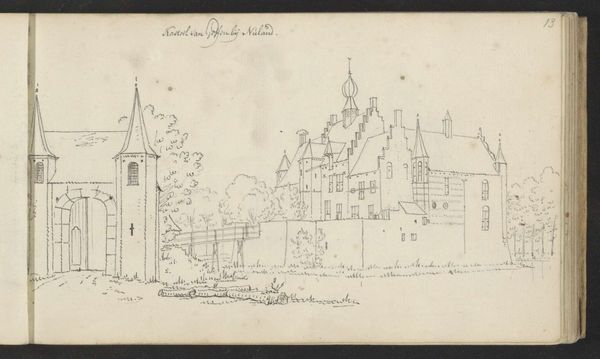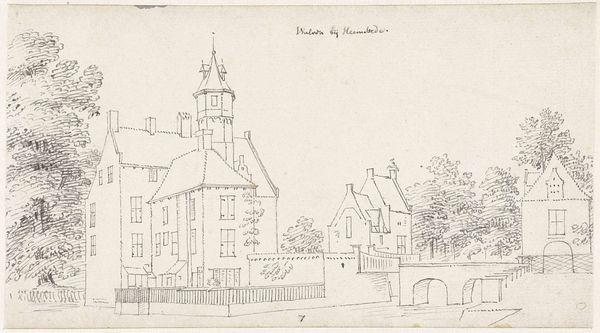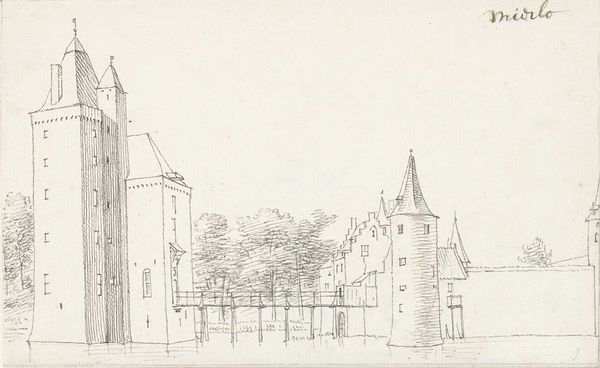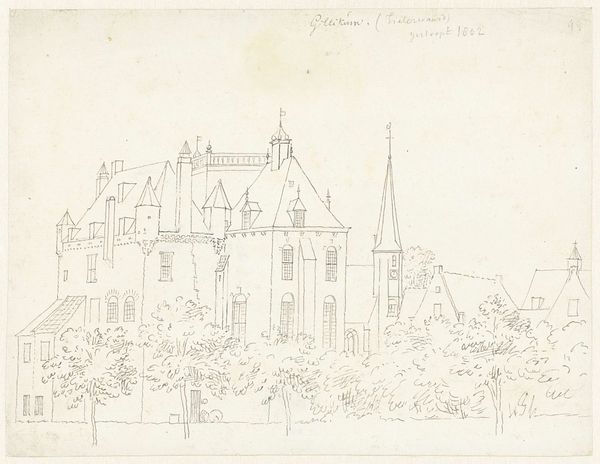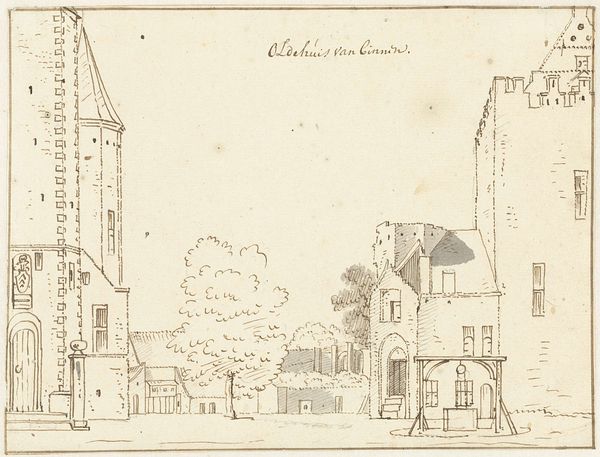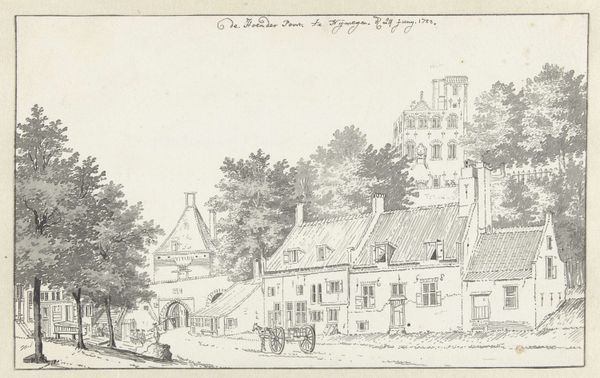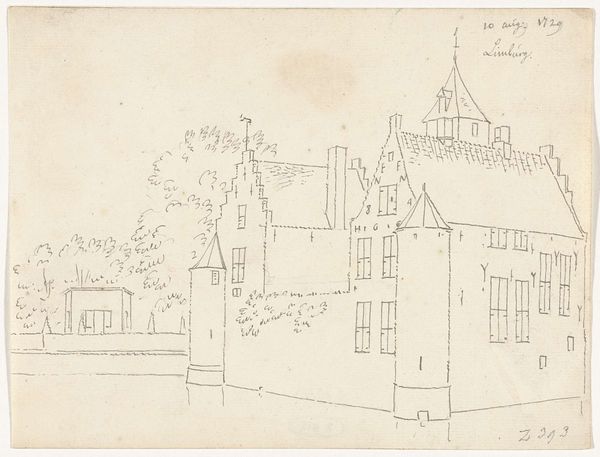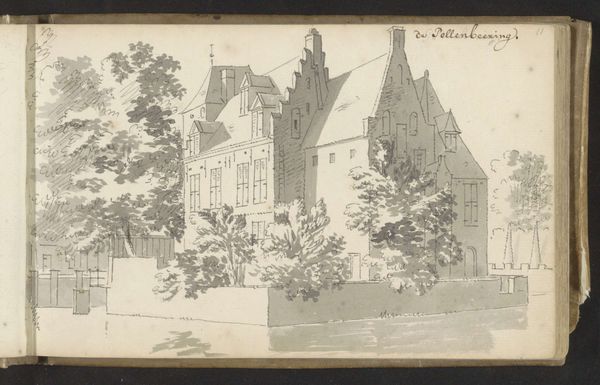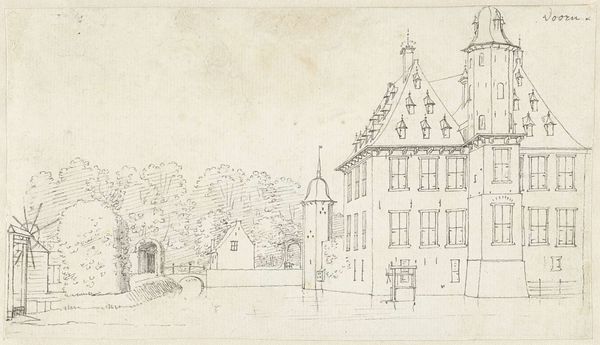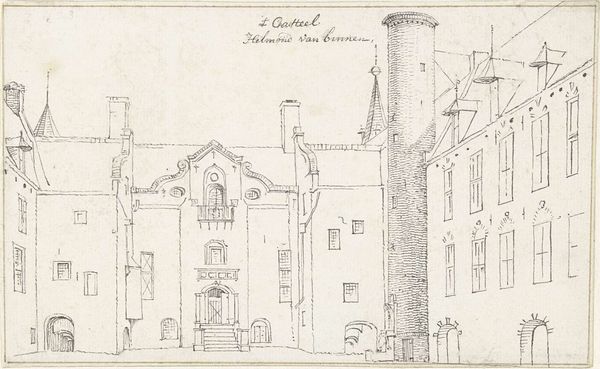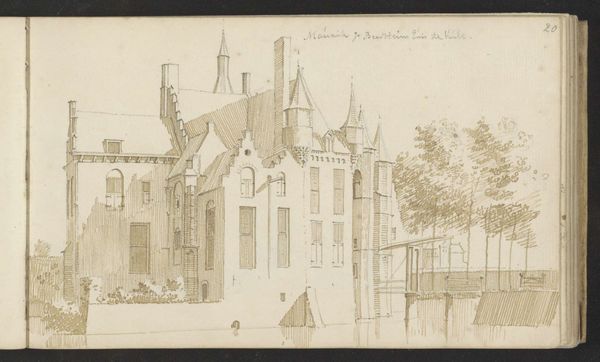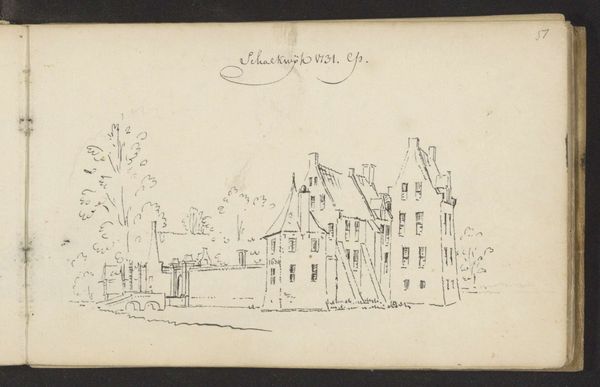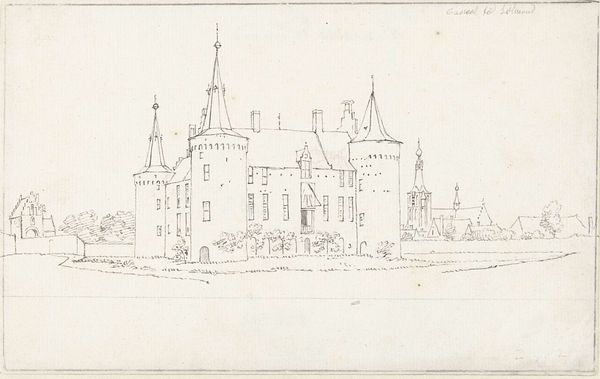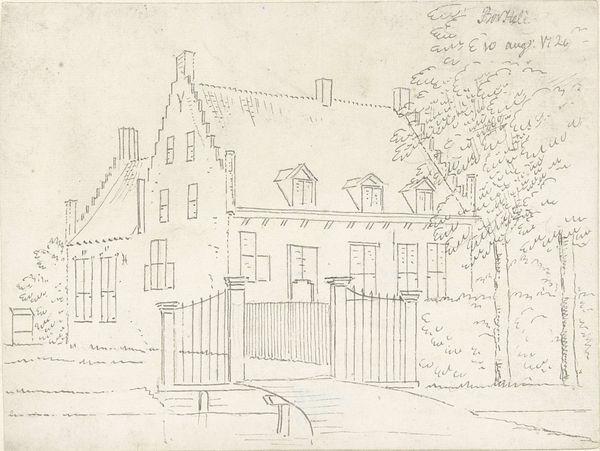
drawing, paper, ink
#
drawing
#
baroque
#
landscape
#
paper
#
ink
#
cityscape
#
realism
Dimensions: height 128 mm, width 203 mm
Copyright: Rijks Museum: Open Domain
Curator: Here we have Cornelis Pronk’s “Kasteel Frisselstein bij Veghel,” a drawing made with ink on paper, sometime between 1720 and 1740. It currently resides here at the Rijksmuseum. Editor: It’s remarkably spare. A skeletal castle emerges, precise yet strangely incomplete. There's a ghostly quality. Does the iconography of bare lines suggest a building on the verge of disappearance, or perhaps an unrealized architectural dream? Curator: Well, Pronk was commissioned to meticulously record existing structures and potential improvements across the Dutch Republic. His drawings were highly valued as tools for understanding the spatial and economic landscape. So in that context, it functions more like a survey. Editor: I see, so more of a matter-of-fact accounting. Even so, consider that sturdy, almost defiant round tower, offset by what looks to be an unusually ornate cross visible through the gateway. There is a latent suggestion of resilience, of history battling modernization. The bare, skeletal representation could echo a period undergoing radical transformation, of societal structures evolving to something more sparse, more calculated, much like this very image. Curator: I appreciate your perspective. These landscape drawings circulated widely among officials, architects and wealthy landowners invested in projects to expand networks for transport and resource management. So yes, one can imagine a great shift occurring at that time. Pronk's rendering might, in effect, mark that turning point. Editor: There’s a psychological component at play here as well. Note the almost hesitant rendering of the foliage—an ethereal border. Are the blurred natural forms hinting at an underlying anxiety as urban areas were growing at unprecedented speed? The drawing then functions not only as document but also barometer of cultural attitudes. Curator: That’s a useful addition. In this context, consider Pronk's patronage – powerful municipal bodies leveraging art for purposes far removed from personal expression or aesthetic exploration. Understanding that transactional framework, where images acted as reports influencing future landscapes, provides deeper insights into these baroque realist pieces. Editor: Indeed, understanding this historical usage re-contextualizes its impact on us. What was once a blueprint is now a fascinating mirror. Curator: A truly productive line of thought.
Comments
No comments
Be the first to comment and join the conversation on the ultimate creative platform.
